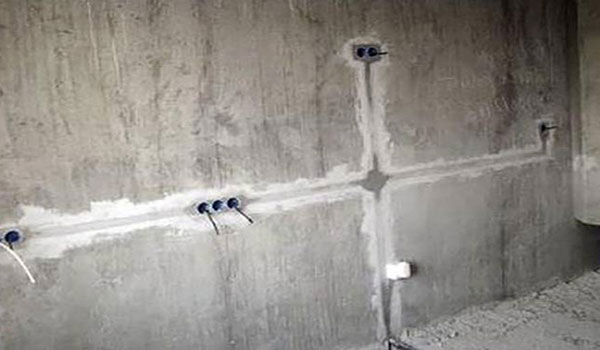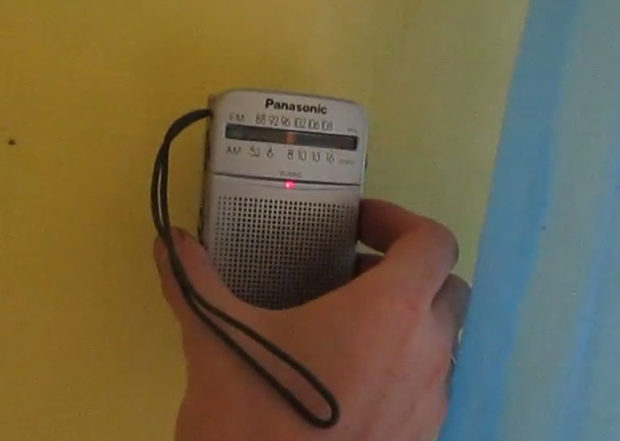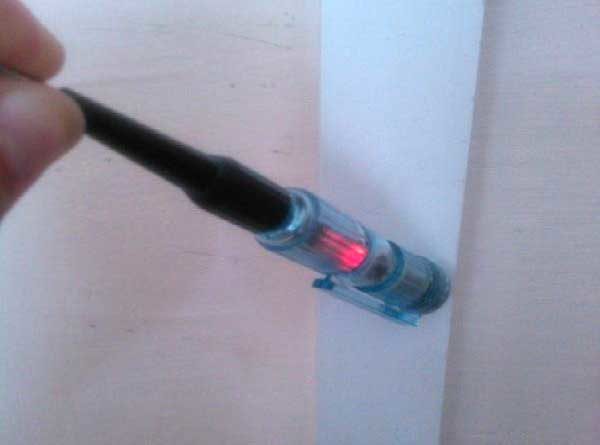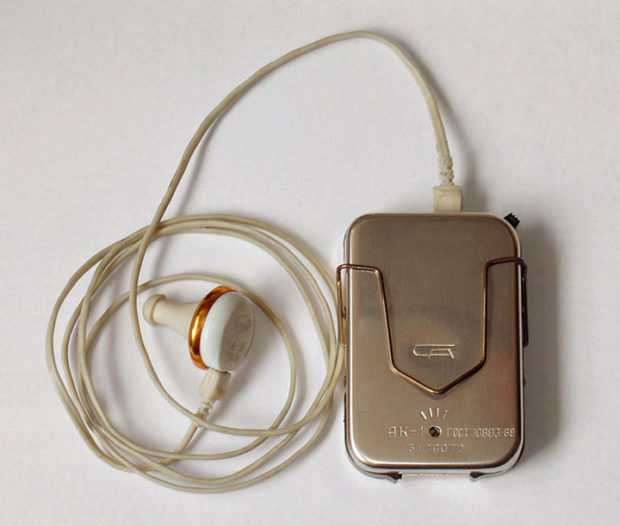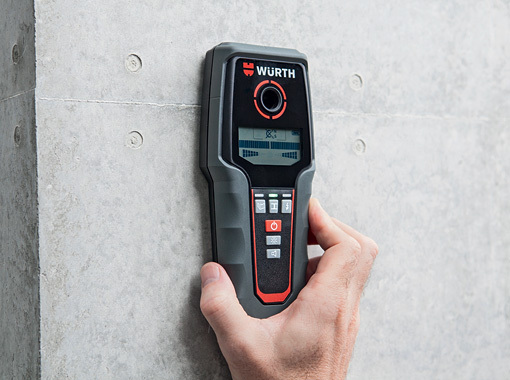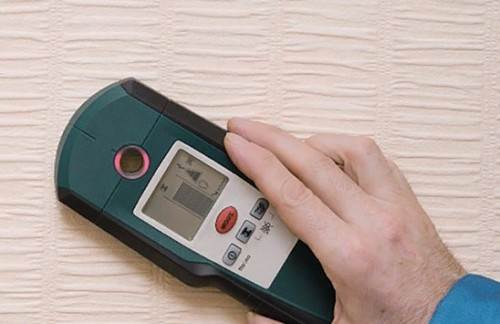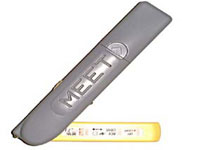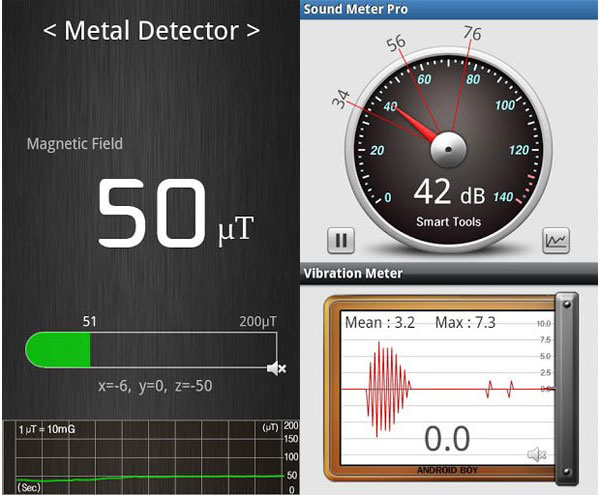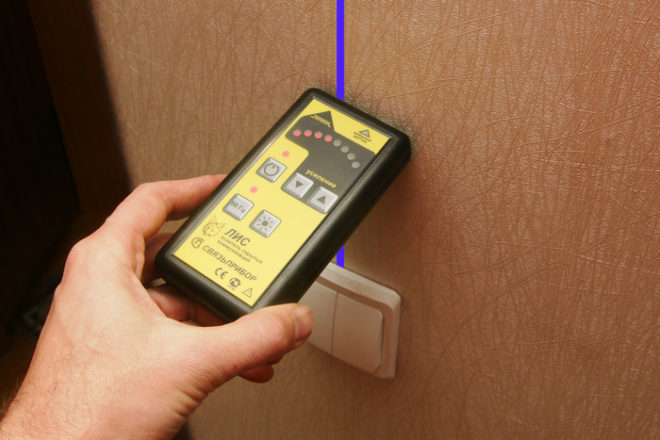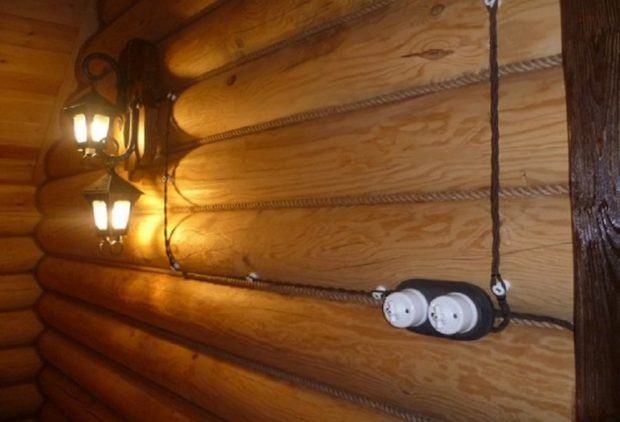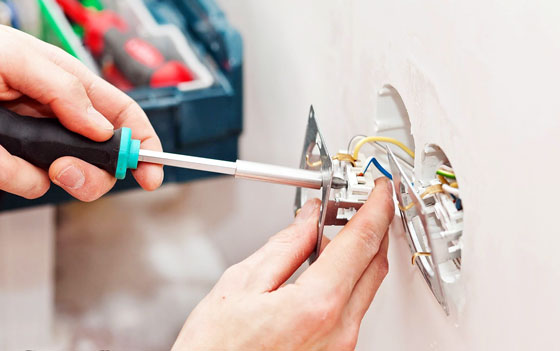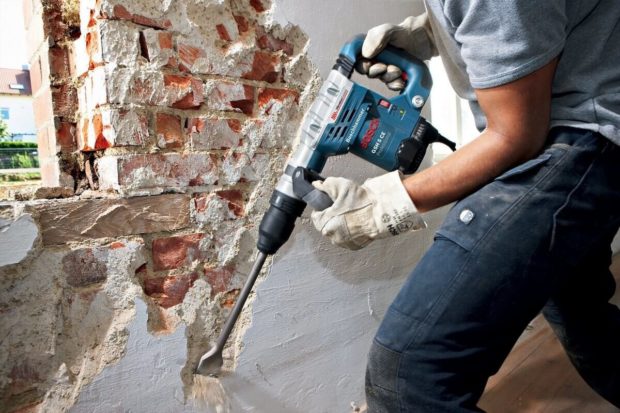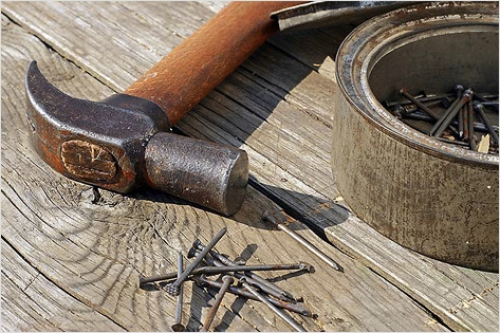4 tips for finding hidden wiring in the wall
Sometimes such an elementary action as, for example, installation wall shelf or pictures can become a real problem. This is due to the fact that the contractor simply does not know whether the electric cable passes in this place. This situation may occur if you purchased new housing, and the previous owners did not bother to provide you with a plan for the electrification of the premises. And if you have a wiring plan, you should not rely on the decency of the people who performed it, because in order to save money, electricians often neglect the established standards. For our own safety, we strongly recommend against hoping for good luck. In this article we will tell how to find hidden wiring in the wall both with the help of special devices, and without their use.
1. The most basic ways to detect hidden wiring
Masters who neglect the activities associated with finding the exact location of electric cables can face a number of very unpleasant consequences. Starting from damage to the cable itself, which will lead to a short circuit and, accordingly, failure of the object that was powered from this cable itself, up to electric shock. You must perform a search without fail if you have become a necessity:
- install new sockets or switch;
- perform other installation work related to drilling a wall;
- partially replace the electric cable;
- eliminate various malfunctions with the electrics (open circuit or short circuit);
- at redevelopment premises associated with making new openings;
- when replanning the wiring diagram itself.
Only if you plan complete replacement wiringYou do not need to know the location of the cables. For major repairs, old wires can simply be pulled out of the wall. This is not difficult to do, since only a small layer hides them putties. And if the new wiring will pass on the ceiling, which is very popular recently, the old wires can still be left in place.
Consider simplest ways hidden wiring detection:
- Visual inspection. This method is quite good. Especially if you are planning change wallpaper. After all, it implies their complete removal from the wall. You need to get to the plaster. Therefore, the base layer must also be soaked and removed. Now you just need to carefully examine the walls. Flush mounting is done by laying wires in shallow strobes, which are then simply covered with a layer of plaster. This is not always possible to do perfectly smoothly. Often in these places there will be small bulges, or vice versa, small indentations. It is these places that need to be discovered. To be 100% sure, swipe your hand along the wall in the intended place. You will definitely feel these nuances. Now you need to expose the wire, that is, relieve it of the masking layer of the solution. To do this, use a small bench hammer. Gently tap the entire length of the strobes and the putty will crack.

- Using the old a radio receiver. This simple method is described in many sources, because it really works. You will need a receiver that needs to be tuned clearly to a frequency of 100 kHz.The room should be complete silence. The included receiver should be leaned as close to the wall as possible, but do not scratch it on the surface, and run along until a characteristic crack or noise level increases. If there is a retractable antenna, you must drive along the wall with its tip. This signal will notify about the presence of a wire. The only condition at which this method will work, is the presence of voltage in the desired wire. The closer you get to the gate, the more crack will intensify. This method cannot boast of particular accuracy. But you can easily determine the corridor in the range of ± 10 cm. Often this is enough to not get caught a nail into the wire.

- Via indicator screwdriver. Most owners have this thing for sure. This device is cheap and easy to use. The indicator screwdriver works on the principle of responding to an electromagnetic field that emits an electric cable. It has three degrees of sensitivity - “O”, that is, the definition of the supply phase, “L”, that is, non-contact determination of the presence of electrical wiring with a low degree of sensitivity and “H”, which means non-contact determination of the presence of electrical wiring with a high degree of sensitivity. The indicator screwdriver is equipped with a light indicator. When you find a hidden wire, a small diode at its end will light up. Using the device is very simple. You need to touch the tip of the screwdriver and just drive it along the wall. TO disadvantages associated with the use of this method, it is possible to attribute a large error and a small depth of action. If the cable is hidden under a layer of plaster, more than 2 cm thick, the indicator screwdriver will not help you. And the width of the channel, in which the cable is supposed to pass, will lie in the range of ± 10-20 cm.

- Via hearing aid. A very unusual method, for the implementation of which old-style hearing aids, for example, the AK-1 brand, are ideal. With its help, you can quite accurately determine where the wire passes. This device has a “telephone” mode, which helps hearing-impaired people without any obstacles make phone calls. To detect hidden wiring, you must transfer the device to this mode. Now he will perceive only electromagnetic oscillations. It remains only to bring the sensor to the place where, in your opinion, the cable should pass and listen carefully. When you find yourself in the right place you will hear characteristic noises.

According to established standards all wires from the branch box must be laid strictly vertically or horizontally and have rotation angles of 90 degrees. Routing the diagonal cable is strictly prohibited. Perhaps this knowledge will simplify your searches a little. If you see a socket or switch, then it’s logical to start looking for a cable leading to it, directly above or to the side of this point, if it is a parallel connection.
2. Overview of the most used search engines
Not always "folk" methods, given their great error, give the desired result. In this case, you will have to resort to the help of special devices. Before we consider the most popular of them, it is necessary to deal with the principle them actions. There are three varieties of seekers:
- Electrostatic - The principle of their action is based on trapping the electromagnetic field that emits current passing through an electric cable. Devices based on this principle are some of the simplest and most affordable. They are most common among professional electricians as well as among home craftsmen. The accuracy of their determination is quite high. You can only use the electrostatic device provided that the walls are absolutely dry and not damp and that there are no foreign metal inclusions in them. This is primarily about fittings, which is often found in partitions of panel houses.

- Electromagnetic devices are based on the same principle of operation as electrostatic, but with one difference. The required wires must be under load of at least 1 kW. That is, before embarking on a search for a wire leading to a specific outlet, you must include something in it. It can be an electric kettle, a microwave or something else.

- Metal detectors - differ from previous devices in that they themselves are emitters of an electromagnetic field. When the metal, which is in the middle of the cable, falls into the zone of action of the magnetic field created by the device, it will cause its change. It is to these resistances that the metal detector reacts. Advantage devices of this type is that the load on the wires is optional. A clear disadvantage it will become that the metal detector will respond not only to metal in the middle of the electric cable, but also to all kinds of pieces of wire in the wall, old nails and fittings. Therefore, acquiring such a device, it is better to buy a more professional model, which allows you to determine the type of metal detected. This feature will greatly simplify the search.

There are also appliances with combined principle of action. The scope of their application, as well as their accuracy, is much higher. With their help, you can not only identify the location of the wiring, but also determine the location of a break or ground, detect a phase wire. Such a device will become indispensable if working with electrical wiring is your specialty.
Now consider in more detail the individual models search appliances:
- Device "Search" based on electrostatic principle of action. It is equipped with 4 modes of different sensitivity, with which you can determine the location of the cable, which lies at a depth of 7 cm. Light and sound indicators are used as a signaling device. This device is very easy to use and has a number of additional functions. To search for wiring, you must select the appropriate mode, in this case the fourth, and simply drive the device along the wall. For home use, “Search” is very good and has an affordable cost. But for professional work, it is not suitable.

- Another popular model of domestic production is a device called "Woodpecker". It can be used by both home craftsmen and specialists. It is both a tester and a signaling device. With it, you can find an electric cable under a layer of plaster up to 8 cm inclusive. The device can monitor the operation of fuses, search for phase cables, check the phase of the electricity meter, look for electrical faults. The principle of its operation is based on the electrostatics of an alternating field. When the device’s antenna approaches the wire, the electrodynamic force begins to work and the equipment reproduces the signal.

- Tester CEM LA-1014 It is a proven and high-precision device. With it, it is possible to detect even de-energized wires under a layer of plaster. A characteristic feature of this device is that it is able to find faulty and damaged cable sections that have fusion, short circuit or open circuit. Disadvantage The tester is his response to other metal objects that may be in the wall.
- One of the amateur devices based on the combined principle of action is called MAG-2. The device combines electrostatic and electromagnetic principles. It has two operating modes that allow you to detect a cable that is under or without load. When the cable is found, the device will notify you with the help of light and sound indicators.

- Signaling devices of the Chinese manufacturers of the MS series. For example, a device MS-58M, which belongs to the category of tester-probe, can easily detect both electrical wires and other metal objects. Given this, you must be extremely careful when working with this device and will learn by ear to distinguish between the signals that it sends. For example, the signal received when a conventional screw in the wall is detected will be different from the signal coming from the power cable. You just need to get used to the device. An interesting fact is that he will not be able to detect an object that is wrapped in aluminum foil. It serves as a screen that prevents the detection of metal particles.

Using any of the above devices, you will quickly and accurately cope with the task.
3. Methods that do not work
We examined effective methods for detecting hidden wiring using both professional devices and improvised tools. Now let's look at a couple of ways that, contrary to repeated mention on the Internet, are not worth the time you take to implement them:
- Search for wires with compass. Despite the fact that most craftsmen recommend this method, you should understand its principle of action. It is based on the fact that at home you must create a load of such a force that the compass needle, approaching the cable, react to it, and even point in the right direction. In fact, you simply cannot create magnetic induction so strong that the compass reacts to it. And given the considerable layer of plaster, this is completely a failure.

- Search for wires with magnet. It is believed that if you tie a single-charged magnet on a string and slowly drive them along the wall, then in the place where the electromagnetic cable is laid, the magnet will begin to oscillate like a pendulum. By marking these vibrations with dots, it becomes possible to outline the corridor within which the cable will pass. It is possible, but very doubtful, that this method will work in brick houses. In panel houses, or when trying to detect a power wire on the ceiling, this method is absolutely useless.
- Smartphone, as a device for finding hidden wiring. For smartphones based on Android or OC Mac, in the application store you can find many programs that are designed to cope with the search. The most popular application is called “Metall Detector”, but there are many of its analogues. Inside the phone there is a built-in magnetic sensor, which in combination with this application turns the smartphone into a metal detector. Firstly, the device will respond absolutely to any type of metal that is in the wall. And secondly, you should not take this idea more seriously than an ordinary toy. Moreover, you should not rely on such a dubious method as the main one before starting any work.

4. Fans of electrical engineering: we make a do-it-yourself search appliance
Those who are even a little versed in electrical engineering can independently make a small device from elementary parts. To make you required:
- Box made of plastic;
- Aluminum tape;
- Batteries
- Light bulb;
- Transistor.
The box should not be too large. A plastic box from an ordinary one is also suitable. light bulbs. On one of its sides it is necessary to stick a small piece of aluminum tape. It is needed as an antenna. Install 4-5 watts batteries. Make a hole on one of the faces and mount a light bulb there. Now you need to install an ultra-sensitive transistor and attach the batteries and antenna to the tape. You can use wire as an antenna. When all the parts have taken their place inside the box, close the lid. Drive the antenna of the resulting device on the wall. When you touch the cable location, the light will come on.
Another simple device can be assembled from:
- Transistor
- Ohmmeter;
- Dynamics.
Paying attention to the fact that this device is one of the most basic for understanding people, its accuracy will be appropriate. It is necessary to assemble the chain according to the scheme below.  An ohmmeter is better to use an arrow type. For ease of use, you can enclose all components in a small box. The speaker is suitable from an old landline phone. The device will respond to the presence of wires in the wall with the corresponding noise.
An ohmmeter is better to use an arrow type. For ease of use, you can enclose all components in a small box. The speaker is suitable from an old landline phone. The device will respond to the presence of wires in the wall with the corresponding noise.

